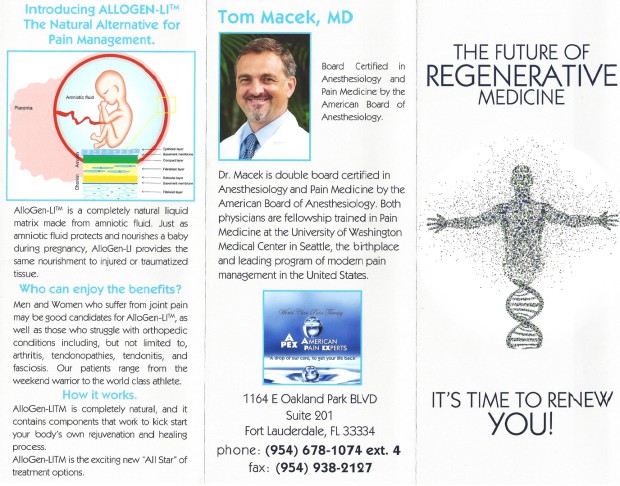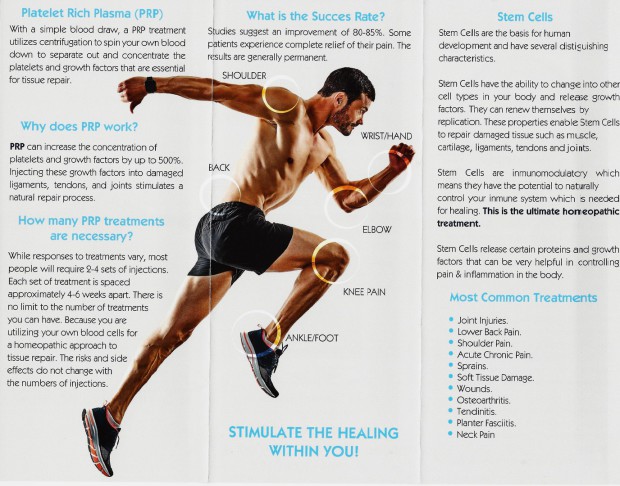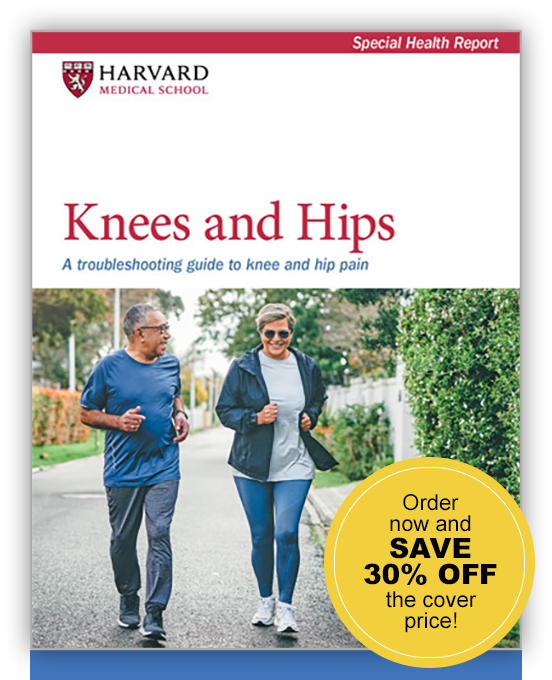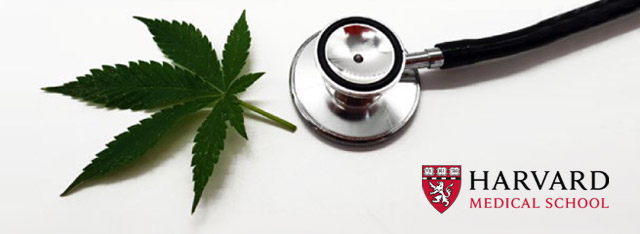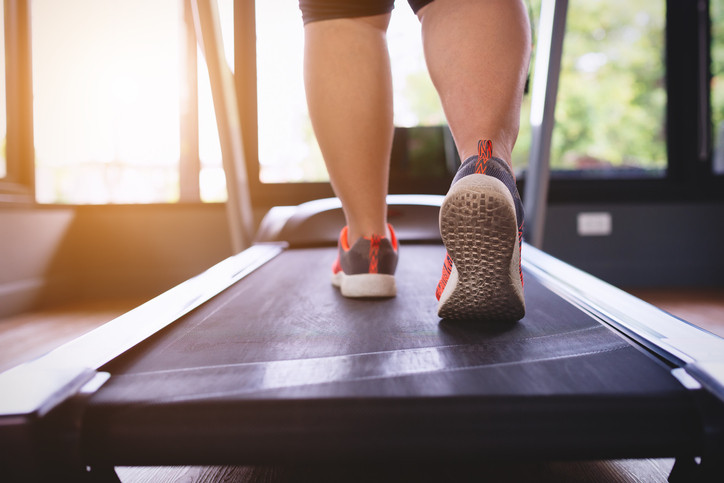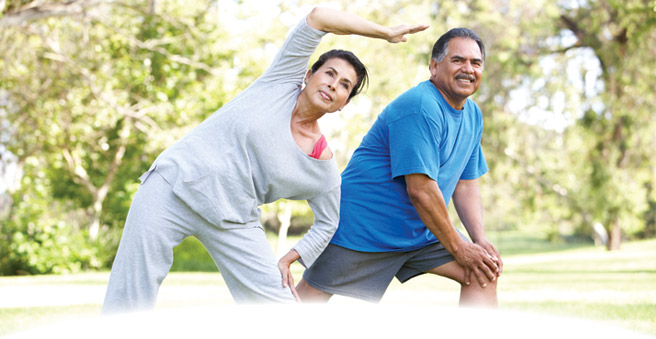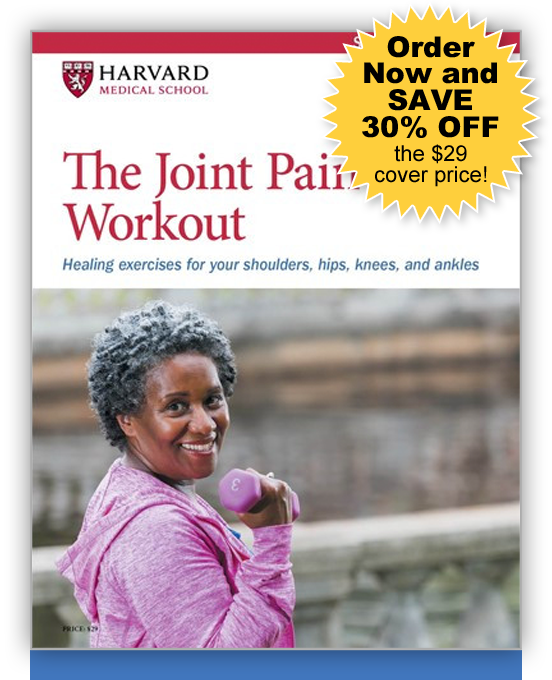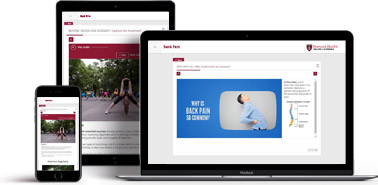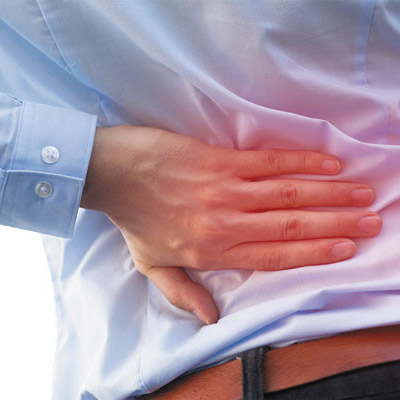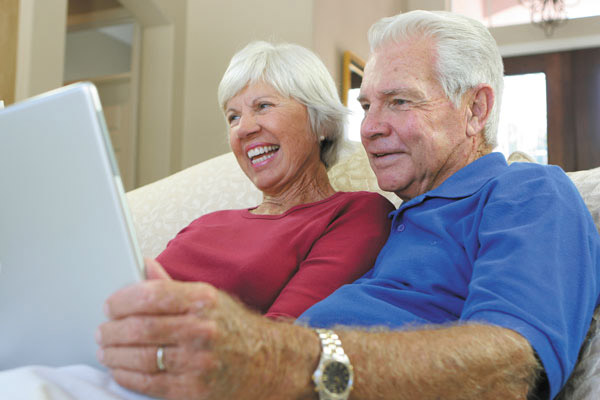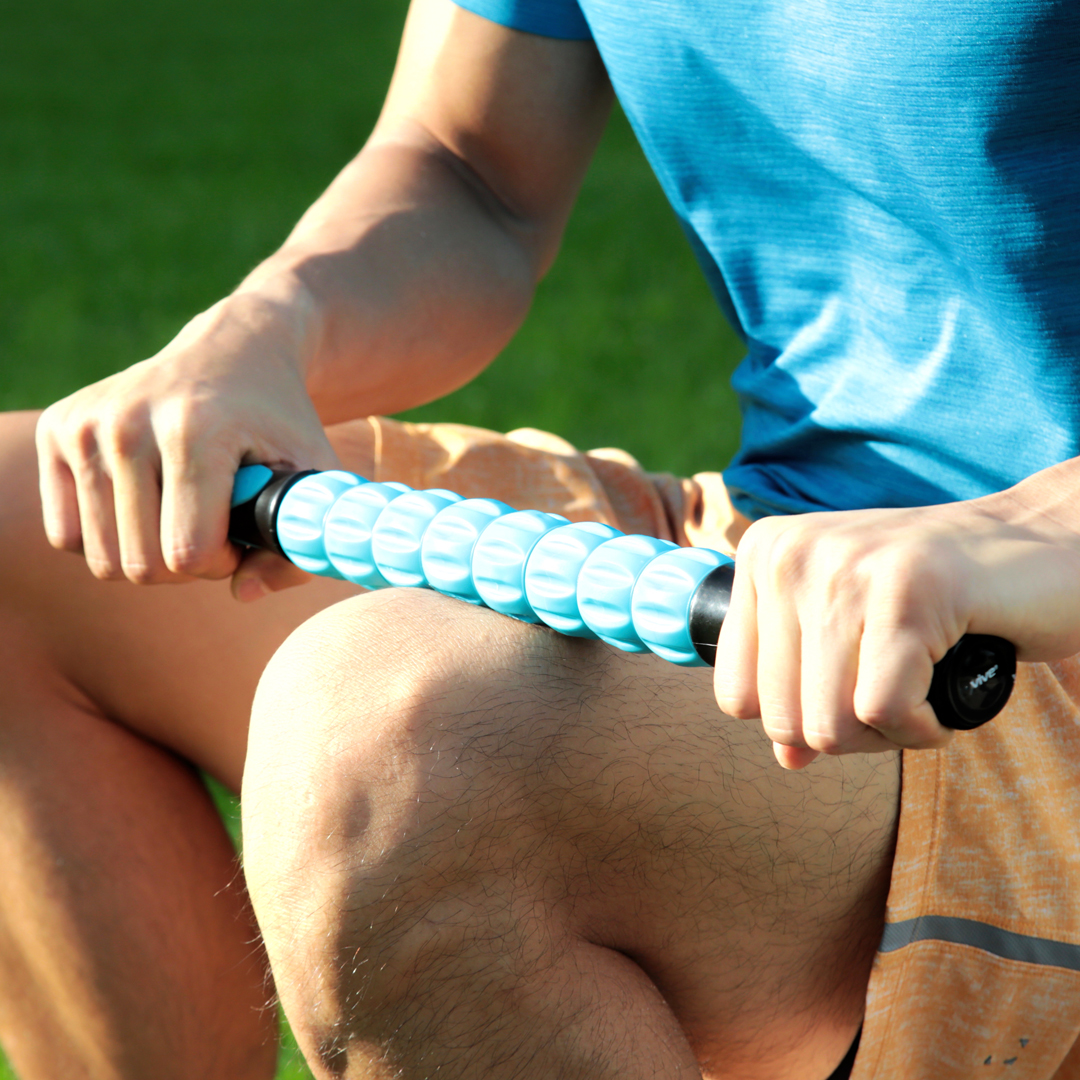Pain Management
It is our pleasure, purpose and goal to share Connection - Holistic Lifestyle - Alternative Healing Treatments - Living Happier with New Thought - from original sources.
GlobalCnet is a collection of links to original thought, research, new ideas and found expert advise. We have assembled extensive information and facts to inspire YOU to further your education, skills and desires on your specific subjects. When you click on a blue link, you arrive on a web site, do your research, and observe all the other articles available to you. Record what you need. Share what your learned.
GlobalCnet connected you, to make better informed decisions.
This is a teaching and informative Web Site again, presenting original authors, like Harvard University, MedNet, Unstuck.com, Readers Digest, Mental Health and documents from millions of Web Sites which were written, published and illustrated with specific content to expand your knowledge for personal growth, health and answers. All this WWW content was meant for your reading and answers,
GlobalCnet just connected you.
It is our hope that you use all information for further answerers, ideas for more exploration and the wisdom to share discoveries with others. It is all about having the right fast or safe connections. Everything has atready been discovered, be smart and use proven methods and spin your solutions to fit your needs.
Any questions, comments or to just say hello...leave a webmail .
Quick links to information and new ideas. click here.
OK...you are now on GlobalCnet. You can use the SEARCH BAR to quickly find subject information, or you can visit all the pages. Your visit will award an organized starting point leading to answers to your challenge.......just do it. Type in a word and hit search.
- Michael J. Malette, PhD
Founder, Global Connection Network, Inc
MSM Supplement Improves Joints, Allergies, and Gut Health

What if I told you there was a so-called “miracle supplement” that could help lower inflammation, fight the effects of stress and pain, raise immunity, and increase energy levels? Would you be interested? Then you need to know about MSM.
What is the supplement MSM good for? It’s used to help treat literally dozens of illnesses, painful symptoms, and diseases.
For example, research suggests that MSM benefits include improving immune function, lowering chronic inflammation and helping to restore healthy bodily tissue.
What Is MSM?
Many benefits of MSM dietary supplements are attributed to its biologically active sulfur, which is the fourth most plentiful mineral in the human body. Sulfur is needed for many critical bodily functions daily, and MSM is considered a sulfur donor.
In dietary supplement form, it’s often used with other ingredients supporting joint health and connective tissue healing— including dimethyl sulfide and sulfone DMSO, glucosamine/chondroitin, and boswellic acid.
Uses
Some of the most common uses for MSM include treating:
- chronic joint pain (osteoarthritis, joint inflammation, rheumatoid arthritis)
- leaky gut syndrome and autoimmune disorders
- osteoporosis and susceptibility to bone fractures
- bursitis, tendonitis, the development of scar tissue and other musculoskeletal pains
- allergies and asthma
- yeast infections
- muscle cramps
- constipation, ulcers, upset stomach, indigestion
- PMS symptoms (cramps, headaches, water retention, indigestion)
- stretch marks
- hair loss
- skin problems including wrinkles, sun burns (it offers some protection against UV light/wind burn), wounds, cuts, skin abrasions
- eye inflammation
- poor circulation
- high blood pressure
- fatigue
- oral infections, toothaches, gum disease/periodontal disease
Visit Dr. Axe for many natural health information.
Great Back Pain Tips.....
MedicineNet.com
HEALTH TOOLS
![]() Quizzes
Quizzes ![]() Medical Word of the Day
Medical Word of the Day
![]() MedicineNet Home
MedicineNet Home
A 2-Minute Morning Routine that Guarantees a Great Start to the Day
Written by Angel Chernoff

by Neil Pasrisha, author of You Are Awesome
“Be willing to be a beginner every single morning.”
― Meister Eckhart
Do you know that clichéd Catholic confession chamber scene from the movies?
“Bless me, Father, for I have sinned,” the mobster says, on bended knee, behind the metal lattice.
“I put Two-Faced Tony in a vice at the deli and chopped him out of the family.”
I didn’t grow up Catholic, yet it always seemed interesting to me that confession was a religious practice.
I looked into this as part of my research for my new book on resilience You Are Awesome: How To Navigate Change, Wrestle With Failure, and Live an Intentional Life.
I found it’s not just Catholicism!
The act of confessing is an integral part of many world religions from Catholicism to Islam to Judaism to Mormonism to Buddhism.
Over the ages of our species coming into its own, across different geographies, different times, different backgrounds, we were somehow all wise enough to include a little emotional geyser of confession as part of how we lived and worshipped together.
Why?
Well, it seems to me if we can process and articulate a worry subconsciously swimming in the seas of our brains . . . we actually pull them out of our minds.
We extricate them.
We eradicate them.
The worries get pulled out of the wet dirt below and suddenly sit like shrivelly little worms on the hot sidewalk in front of us where, under the hot glare of the day, we just know they won’t last.
The thing is today we’re living in an increasingly secular society.
Many of us are living without a confession chamber.
I think that’s why we’ve seen the rise of websites such as PostSecret, an incredible project where Frank Warren collects, curates, and posts anonymous artistic confessions created on postcards mailed to him. What’s this little confession project turned out?
A nearly billion-hit website, six New York Times bestsellers and a top ranked TED Talk.
Plus the postcard confessions themselves rove around galleries around the world and live at the Smithsonian.
We want to confess.
We need to confess.
We have to confess.
We have a shared desire to pull out and process things we’re worrying about instead of letting them sit deep inside and fester.
Some fascinating research published in Science magazine by the neuroscientists Stefanie Brassen and her colleagues backs up how healing it can be to reveal. Their study, titled Don’t Look Back in Anger!:
Responsiveness to Missed Chances in Successful and Nonsuccessful Aging, shows that minimizing regrets as we age creates greater contentment and happiness.
The research also shows that holding on to regrets causes us to take more aggressive and risky actions in the future. So the healthiest and happiest people are aware of regrets they harbor and then choose to let them go.
But how?
Want to know how to do this?
Here’s the two-minute morning practice.
Every morning I grab an index card or a journal and write these three prompts:

I aim to complete the prompts every single day.
So in a recent entry, I wrote:

It takes only two minutes to do, and the difference in my life has been both immediate and incredible.
Completing three simple sentences helps me “win the morning,” which helps me start to “win the day.”
We’re all awake for about 1000 minutes a day.
That’s it!
So isn’t it worth taking two of those minutes to help the other 998 be as good as possible?
It’s an incredible lever you can use to level yourself up.
Revealing a little mental anxiety on a piece of paper has been hugely healing for me.
Because, crazy as it sounds, whenever we write out our little anxieties, they disappear.
- I have five pounds of blubber on my stomach.
- I’m worried about what school my kid will go to next year.
- I think I said the wrong thing in an important email yesterday.
Want to know what happens when I flip back in my journal weeks later?
“Oh,” I think to myself.
“What email was I worried about again?”
I often can’t even remember what the cause for concern was.
What about the big anxieties?
Say your mom is sick.
Gravely ill.
These may be her final days.
Will the two-minute morning practice still help?
Yes.
It will.
Because you’re saying it, you’re processing it, you’re admitting how you feel about it, so the heaviness can be examined and acknowledged.
Plus, the next prompt is “I am grateful for . . .” So you are forcing your brain to find little positives even amid a bigger negative situation.
“I got to read my mom the book she read to me when I was a kid,” “Nurse Jasmine brought me a coffee,” “My kids all came home for the weekend for the first time this year.”
It’s a simple practice that allows for a quick therapeutic breather and a little moment of presence from our future-focused minds.
The two-minute morning practice helps you feel better and get more done because you’re performing a mental release.
You’re revealing to heal.
Putting your brain in a better space.
Showing up as your better self.
We know from a great study called The Benefits of Frequent Positive Affect: Does Happiness Lead to Success? by Sonja Lyubomirsky, Laura King and Ed Diener that if you show up to your day with a positive mindset, you’ll have 31% higher productivity, 37% higher sales, and three times as much creativity as your peer group.
Those are big wins, all achieved by taking a few moments to let go of something, feel grateful, and bring some focus to your day.
- “I will let go of . . . obsessing about the hairy birthmark on my arm.”
- “I will let go of . . . feeling embarrassed that I left the spin class completely out of breath five minutes in.”
- “I will let go of . . . worrying that I messed up my three-year-old by screaming at him to put on his shoes.”
Revealed.
Healed.
And what about the gratitudes?
Why do we have to make sure to write them down?
Research by professors Robert Emmons and Michael McCullough shows that if you write down five gratitudes a week, you’ll be measurably happier and even physically healthier over a ten-week period. And the more specific, the better.
Writing down “family, food, and job” or something similarly vague over and over doesn’t cause any spike in happiness.
Our minds don’t relive any specific experience that way.
Try things such as:
- “I am grateful for . . . Trooper learning how to shake a paw.”
- “I am grateful for . . . the cinnamon bun smell in the train station.”
- “I am grateful for . . . Rodriguez putting the toilet seat down.”
You get the idea.
I picture writing down gratitudes after I’ve just ejected an anxiety being sort of like a Zamboni whisking through my neural networks, smoothing everything out, splashing freezing cold water over all my thoughts.
And now, finally, the focus.
What does “I will focus on . . .” help us do?
Well, once you’ve revealed and healed, cleaned off your mental ice rink, it’s time to strip away the endless list of things you could do and focus on the things you will do.
Why?
Because if you don’t you will mentally revisit your could-do list all day long.
And that will only cause decision fatigue.
Decision-making energy uses a particularly complex part of the brain and we’re wasting energy anytime we’re unfocused.
As Florida State professor of psychology Roy Baumeister and New York Times journalist John Tierney said in Willpower: Rediscovering The Greatest Human Strength, “Decision fatigue helps explain why ordinarily sensible people get angry at colleagues and families, splurge on clothes, buy junk food at the supermarket and can’t resist the dealer’s offer to rustproof their new car.
No matter how rational and high-minded you try to be, you can’t make decision after decision without paying a biological price.
It’s different from ordinary physical fatigue—you’re not consciously aware of being tired—but you’re low on mental energy.”
Letting go of stress this way early in the morning helps me avoid mentally revisiting a worry throughout the day.
Writing down a few things I’m grateful for helps me be more positive every day.
And focusing my attention on a big goal for the day actually seals the deal.
Clean ice and clean thinking to get back on track.
Reveal to heal.
And of course, I would love to hear from YOU in the comments section.
Which point in this post resonated the most today?
---------------------------------------------------------------------------------------------------------
Make sure you visit the onlie VIVE Health Shop or helpful solutions for pain, sleep, exercise, mobility and many more
unique solutions. Just click here.
------------------------------------------------------------------
Create a plan to relieve your back pain
If you suffer from back pain, you've probably tried one or two ways to ease it. The range of options — from doing nothing at all to having surgery — is quite large. But the abundance of choices also presents a challenge. How do you know which therapy is right for you? Before you decide on a course of treatment, keep these three things in mind.
How you decide to manage your back pain will ultimately depend on many things. Taking all these factors into account will help you make a shared decision with your doctor to determine which of the available options are right for you. For more on healing an aching back, review Back Pain, a Special Health Report from Harvard Medical School. Image: gilaxia/Getty Images
|
Featured in this issue |
|
Back Pain: Finding solutions for your aching backFeatured content:
Click here to read more » |
--------------------------------------------------------------------------------------------
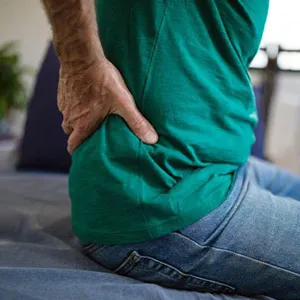 Back Pain: Bad Habits for Your
Back
Back Pain: Bad Habits for Your
Back
------------------------------------------------------------------------------
You no longer have to suffer
from aching knees or hips...
|
Dear Reader, Your knees and hips are among the most active joints in your body. They not only support your weight when you’re standing, they make it possible to bend down and tie your shoes, walk up the stairs, and turn your body to make a great backhand shot in tennis. When you think of all that your knees and hips help you do, it’s not surprising that they’re prone to injuries and other painful problems. Now the experts from Harvard Medical School have revealed the best ways to relieve knee and hip pain whether you’ve strained a muscle, torn a tendon, or begun suffering the aches of osteoarthritis.  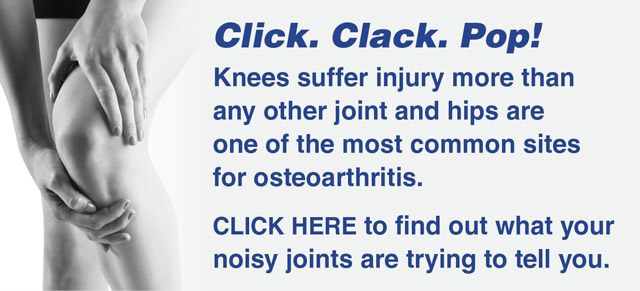
Inside Knees and Hips: A troubleshooting guide to knee and hip pain you’ll find the best information from renowned experts and you’ll learn:
You’ll also discover the secrets that make it easier to recover from knee or hip surgery — and so much more. Don’t let knee or hip pain slow you down. Click here to get relief and save 30% off the regular $29 price. Sincerely, Howard E. LeWine, M.D. |
------------------------------------------------------------------
Suffering from chronic pain, muscle spasms, nausea or anxiety?
Medical Marijuana could be the breakthrough you’ve been hoping for!
Now the experts from Harvard Medical School give you
the
real truth about medical cannabis and CBD.
Dear Reader, Did you know, nearly 2 million people reported using marijuana exclusively for medical reasons. That number is only bound to increase as more and more states legalize the use of cannabis for medical purposes. But the popularity of this “new” treatment has created a flood of misinformation and false promises. Unscrupulous companies and marijuana enthusiasts are making claims it can treat everything from anxiety and depression, to inflammation, weight gain and even dementia. But what are the facts? What are the proven benefits, and what are the risks? What’s the right dose, and how do you determine the quality of what you are taking? Do the products you’re buying even contain the ingredients they promise? Don’t take chances with your health. Get accurate answers straight from the experts at Harvard Medical School in Medical Marijuana an all-new online report you can download right now.
Whether you are just investigating the potential health benefits for yourself or are already using medical marijuana you will find the information you need to make the best decisions for your health in Medical Marijuana. This easy-to-understand report breaks down the science and answers your questions. Looking for real pain relief? Before you head for the dispensary, discover which health issues are clinically proven to respond to Cannabis — there are only 3. The list is on page 7. Wondering how you can get medical cannabis? Find out what you need to do to purchase it legally. Are medical marijuana and CBD addictive? Will they cause side effects? What’s the difference between single-compound and full-spectrum cannabis products? We’ll explain the differences and which might be most helpful for treating your symptoms. How should I take it? Today you can find medical cannabis in everything from pills to gummies to lotions, and even special transdermal patches that can deliver cannabinoids (including THC and CBD) directly into the bloodstream. Download your report right now and turn to page 10 to decide the best variety for you. From start to finish, this easy-to-understand guide spells out everything you need to know about medical marijuana and CBD. You’ll have all the information you need, so you can speak with your doctor about whether medical cannabis is something you should try. Download your report right now and discover:
Plus, on page 19 you’ll find an important caution for adults 55+. You’ll learn why people in this age group are more prone to side effects and drug interactions, which is why it’s critical to “start low and go slow” if you decide to give medical cannabis products a try. Before you purchase medical cannabis or a CBD product that promises relief from chronic pain, anxiety, arthritis, insomnia and depression, get the science-based facts and expert advice from Harvard Medical School. Medical cannabis opens a world of new possibilities for patients, but it can be confusing. It’s more important than ever to be an educated consumer and that’s why I urge you to download this report today. Get the facts you need to make good decisions about medical cannabis for yourself and your loved ones. Download now and you could be one step closer to the relief you seek, armed with the knowledge you need to be safe. 
Here’s to your health, Howard E. LeWine, M.D, P.S. Edibles such as gummy bears, chocolates and baked goods are popular ways to ingest cannabis extracts, but they come with a warning that’s not so sweet. When THC is swallowed and digested, it is further processed by the liver into an even more psychoactive compound. Make sure you know how to avoid overdose with the information on page 11. |
------------------------------------------------------------------
 Pain Management: 15 Easy Ways to
Reduce Chronic Pain
Pain Management: 15 Easy Ways to
Reduce Chronic Pain
---------------------------------------------------------------------------------------------
Losing weight can help you lose the pain, too
Many health conditions are worsened by excess weight, and the stress of extra weight on joints can lead to painful conditions, particularly of the knees and feet. It makes sense, then, that losing weight often helps to relieve some kinds of pain. Finding an eating plan that is healthful and enjoyable will help you stick with your weight loss goals for the long term and maintain any weight loss you manage to achieve. To manage your weight, follow these simple rules to cut back on calories:
As for physical activity, you'll find that many forms of exercise are more difficult for people with hip or knee pain. Exercises that are easy on the joints include swimming and water aerobics. Talk with your doctor or physical therapist, who can recommend other ways to incorporate physical activity without making your joint pain worse. There is no magic answer as to how much weight you need to lose in order to make a difference. As few as 10 pounds or 10% of your overall weight might help, but this can vary from one individual to another. For more tips on relieving pain naturally, check out Pain Relief Without Drugs or Surgery, a Special Health Report from Harvard Medical School. Image: Natnan Srisuwan/Getty Images
|
Featured in this issue |
|
Pain Relief Without Drugs or SurgeryFeatured content:
Click here to read more » |
--------------------------------------------------------------------------------
 Arthritis: Causes and Treatment for Joint Stiffness and
Pain
Arthritis: Causes and Treatment for Joint Stiffness and
Pain
------------------------------------------------------------------------------------------------------
4 Principles for Dealing With the Bad Days
With ‘side hustles’ on the rise, it’s important we look after ourselves
691 days.
That’s how long it’s been since I wrote my first article on the internet; the official start of my side hustling journey.
It’s safe to say a lot has changed, namely my goals.
It’s also true that nothing has changed at all.
A paradox, I know.
691 days later, I’ve realized that if you can sustain a side hustle for a decent period of time, you’ll need a mechanism for dealing with the tough days.
A reoccurring theme over the last few years is that the bad days come, regardless of place, mindset or wellbeing.
They always come and every time I’m as surprised as the last.
I think though, I’ve learned a few ways to deal with them.
1. Accepting that pain is part of the equation
Pain features quite heavily in the making of most bad days yet the relationship most people have with pain is confusing.
I was confused for a long time about pain.
I remember sitting on my living room floor, crying my eyes out because I hadn’t yet found out what I wanted to do with my life (yep, true story).
At that moment, in the midst of that pain, I thought I had done everything wrong.
It’s funny, that moment, in the depths of pain turned out to be one of the most pivotal, life-changing moments of my life.
It was by giving in to the pain and feeling completely vulnerable that I started to find my way.
The truth is that pain, even though it feels traumatic and awful at the time, is part of the process.
For me, accepting that pain is going to be part of the equation is a solid place to start.
Principle 1: Expect it to be hard.
2. Acknowledging the good in the bad
I’m just coming out of a little bit of burnout, more like a candle taring through its wick rather than a full-on forest fire.
Nonetheless, the flame has gone out.
Not because I’ve been working too hard after hours but more so because I’ve been psychologically piling on the pressure and it’s become a drain.
I was in a daze of expectations and inaction.
It was a constant cycle of feeling like a failure, finding evidence to feel more like a failure, I felt myself sliding further and further into the burnout hole.
On the third day though (today), I reemerged with new clarity.
I can objectively see, that I’ve done that thing again.
That thing whereby I pile on the pressure for no good reason and paralyze myself.
Years ago, this would have been a 2-week stint of inaction or enough for me to throw in the towel. But because I’ve been here so many times, the cycle is getting shorter.
That’s progress.
That’s the good in the bad.
Over the last 2 years, I’ve learned to understand that every experience, however bad it feels, can always be seen as progress.
Principle 2: Bad is not as bad as it seems.
3. You can feel the pain and find the good in it
It’s not about toxic positivity.
It’s not about avoiding negative emotions or apathy.
It’s not about reassurance or dismissing the gravity of a situation, of course not.
This isn’t an argument for smiling through the pain, I’m all for having a cry and saying the world needs to go in the bin.
I do it often.
I suppose this is about just after that.
When the rain stops and the clouds part.
Just then, that moment when you have the hope that the sun is about to come out.
It’s at that moment you look around and you say, you know what, things have been awful lately but, actually, here’s some good that has come out of it all.
Principle 3: After the rain, look for the sun.
4. Understanding burnout and your triggers
You are likely burning out because of the mental workout you're enduring.
“One hundred percent of the fatigue of the sedentary worker in good health is due to psychological factors, by which we mean emotional factors.”
- Dr. A. A. Brill
My burnout will be different from yours because although we collide on both being humans, my life will have been wildly different from yours.
My triggers will be your levers and vice versa.
My take is not to recommend that one size fits all and that if you simply follow these 4 steps you’ll never have a bad day again, nope, instead my theory is that if you work out what you’re triggers are, you’ll be able to avoid them.
The best way I’ve found to do this is to look backward.
My triggers, from doing a bit of a self-assessment, seem to be idolizing people that have become uber-successful.
Once I start going down the rabbit hole of YouTubers' yearly income report videos I know I’m in for a few bad days.
So I avoid them. The same is true for eating poorly a few too many days in a row, not working on my side projects, and spending too much time internalizing my life rather than living it. But those are just mine.
Principle 4: Work out your triggers.
At the end of the page
The bad days will come.
Part of the problem is thinking anything other.
When they do though, expecting them is the first step in accepting them.
Fearing them will only make their appearance worse.
It doesn’t have to be all doom and gloom though.
There is good in the bad if you care to look closely enough and you can reduce the number of those bad days by simply understanding who you are and what triggers them.
☂️ Join the movement at Occupation Happy, we’re growing fast!

Using Your Pain to Help Others
You can channel your pain into helping others, and spreading a tide of curative energy throughout the world.
Pain is a fact of being and one that permeates all of our lives to some degree.
Since the hurt we feel may be a part of the experiences that have touched us most deeply, we are often loathed to let it go.
It is frequently easier to keep our pain at our sides, where it acts as a shield that shelters us from others and gives us an identity--that of the victim--from which we can draw bitter strength.
However, pain's universality can also empower us to use our hurt to help others heal.
Since no pain is any greater or more profound than any other, what you feel can give you the ability to help bring about the recovery of individuals whose hurts are both similar to and vastly different from your own.
You can channel your pain into transformative and healing love that aids you in helping individuals on a one-to-one basis and spreading a tide of curative energy throughout the world.
The capacity to heal others evolves naturally within those who are ready to disassociate themselves from their identity as victims.
In fact, the simple decision to put aside the pain we have carried is what grants us the strength to redeem that pain through service.
There are many ways to use the hurt you feel to help others.
Your pain gives you a unique insight into the minds of people who have experienced trauma and heartache.
You can draw from the wellspring of strength that allowed you to emerge on the other side of a painful experience and pass that strength to individuals still suffering from their wounds.
You may be able to counsel individuals in need by showing them the coping methods that have helped you survive or simply by offering sympathy.
A kinship can develop that allows you to relate more closely with those you are trying to aid and comfort.
Helping others can be a restorative experience that makes your own heart grow stronger.
In channeling your pain into compassionate service and watching others successfully recover, you may feel a sense of euphoria that leads to increased feelings of self-worth and optimism.
Your courageous decision to reach out to others can be the best way to declare to yourself and the world that your pain didn't defeat you, and in fact, it helped you heal.
Glad To Be Alive The Path To Adulthood – Healing The Pain Becoming The Adult Overcoming Loneliness – Part Two How To Overcome Loneliness How We End Up In Misery How To Deal With Loneliness Emotional Abuse Test Emotional Health – What Millions Still Don’t Know Emotional Insecurity Help You Have Emotion You Have Beliefs You Have Choice You Are Enough You Are Loved You Have A Heart
EMOTIONAL HEALTH –
EMOTIONAL HEALING –
EMOTION –
A fusion of thought and feeling that expands your consciousness.
-----------------------------------------------------------------------------------------------------

Back Pain: Common Spine Problems
Are you glad you can stand or sit upright? Thank your spine, a stack of little bones called vertebrae along the center of your back, from your seat to your neck. It supports your head, shoulders, and upper body. Your spine plays another key role: The vertebrae make a tunnel for your spinal cord. That's the set of nerves that connect your brain to most of your body.
-------------------------------------------------------------------------------------------------------
Don’t let joint pain keep you from enjoying life
Dear Reader, Sore, throbbing joints can make life difficult. About all you can think of doing is heading for the couch and sitting there till the pain goes away. But sitting can actually make joint pain worse! Hours of sitting tighten hip flexor and hamstring muscles and stiffen the joints. Tight hip flexors and hamstrings can affect gait and balance, making it harder to walk — or even making you more likely to fall. That’s why experts at Harvard Medical School created The Joint Pain Relief Workout. This remarkable book brings you 47 targeted joint exercises for shoulders, hips, ankles, and knees that help reduce pain and stiffness and improve flexibility. You’ll get photos of each exercise, along with lists of tips and techniques, the number of repetitions you should do, and even ideas for making the moves easier or harder depending on your fitness level. Plus, included in your Joint Pain Relief Workout are 2 special extras: #1: Walking plan and program: If joint pain is making you more sedentary, try the special walking plan on page 10 of The Joint Pain Relief Workout. You’ll see how to safely increase your physical activity — why it’s minutes, not miles, that matter most — plus get 10 ways to up your motivation to move more. #2: Wrist & elbow mini-workout: Don’t let tennis elbow or golfer’s elbow or your 9-to-5 office routine sideline you. On page 43, you’ll find four exercises for keeping wrists and elbows moving freely — and you’ll even get an easy exercise to strengthen your hand. 
Don’t miss this special report. Get your copy of The Joint Pain Relief Workout today and SAVE 30% off the $29 cover price. There’s no risk. Order now! Sincerely, Howard E. LeWine, M.D. P.S. Click here to see the joint you should strengthen to help improve your balance. |
What Nerve Pain Feels Like

The perception of pain varies with each individual; terms such as stabbing, prickling, burning, tingling, and other descriptions have been used. Nerve pain is difficult to live with but in most individuals, it can be reduced. Nerve pain is also called neuropathic pain.
Understanding Nerve Pain

Nerve pain is usually due to damaged nerves that send false signals that result in chronic pain. Also, the signals may not function to register the pain associated with an injury normally. In a case like this, the person may lack a pain response indicating injury (for example, someone who has diabetes with neuropathy in the feet may not register a foot injury when it occurs).
=============================================================

Sore Hips? Read This Before Reaching For Your Medicine Cabinet..
Let's face the facts: sore joints stink...
When you're sore, it's tough to get around.
And even the simplest tasks can seem like a struggle.
Now, here's the kicker...
If you're affected by this common problem... you may be making things worse without realizing.
Here's why...
When your hip hurts, or your knee is stiff, or your back is throbbing... what's the first thing you want to do?
Pop some Ibuprofen and REST.
You want to take it easy until you're feeling better. Plus, you don't want to risk wearing out your joints, right?
Of course not. But what you may not realize is that this a major mistake.
--------------------------------------------------------------------------------------------------------------
Put back pain behind you — for good!
Learn the best strategies to speed relief, prevent recurrence, and keep your back fit and pain-free!
The end. When it comes to back pain, there’s no better place to start. When back pain occurs, you want it to end. You want to get on with all the things you need to do, want to do, and love to do. That’s where this new online course will take you. To the end of your back pain, to putting the brakes on the aches, to hastening relief, and helping you to a future secure and free from back pain. This interactive course will show you how to quell and conquer your back pain safely and successfully. You’ll discover strategies for conditions ranging from bulging discs to compression fractures ...from strains and sprains to spondylitis and spinal stenosis. You’ll understand the risk factors and the keys to an accurate diagnosis. You’ll learn treatment strategies, including the latest therapeutic and surgical options. And you’ll find proven tips and techniques for a stronger back. Back Pain: Finding Solutions For Your Aching Back is loaded with engaging videos, helpful downloadable charts, and challenging quizzes. You’ll learn the smartest steps to resolve pain. You’ll be introduced to the most effective treatments for chronic conditions. And you’ll master the best exercises for resilient back health. It’s the course you can count on to take you in the right direction! In this course, you’ll find...
This empowering new course will help you set your course for ending your back pain and keeping it away!
The good news is that you don’t have to continue to face back pain. You can wake without the aches and enjoy each day to the fullest and you can do it with this remarkable new online learning course. You can be free from the aches and agony of back pain with Harvard Health Publishing’s Back Pain: Finding Solutions for your Aching Back! Look. Listen. AND LEARN!
Back Pain is a dynamic, interactive, audio visual course packed with content and designed for convenience. You choose the time and you set the pace. The course lets you:
|
-----------------------------------------------------------------------------------------------------------
When You’re Ready, This Is How You Heal
The pain we don’t process can follow us for a lifetime
You recognize that familiar, dull feeling in your gut — as though something is wrong, though you can’t quite pinpoint what. You start to take inventory of your life.
You recount your job, your salary, your friends, what so-and-so from such-and-such time in your life would think of you now, your nice new profile photo on Facebook.
The pieces, when put together, form a picture that should nullify that feeling.
And yet.
You go through life stymied by that ache. It crescendos and crashes. You get distracted by the news or your job or Twitter, or something that temporarily scares you a little bit more.
It goes on, until one day, you realize you’re being levied, haunted, by a pain you can’t quite decipher. Slowly, it wears you down.
It’s harder to get up.
It’s harder to go out.
It’s easier to drink and then drink some more.
Or maybe eat, or shop, or post photos of yourself to Instagram.
Everyone has a different vice.
The more you are confused by the small, scary feeling you can’t figure out, the worse it gets.
And the worse it gets, the more you become convinced that it’s a warning of what is to come.
You start to attach thoughts to the feeling, fear stories.
The stories, you realize, are illogical.
You’re overreacting.
You’re convinced your world is imminently coming to an end and these “gut feelings,” the ones you’ve been implicitly told to trust for so long, are simply warning you to take cover.
The thing about life is that our emotional experiences, if we don’t finish them, stay with us.
What you can’t see right now is that nothing is really wrong.
Actually, things are really right, which is why you finally feel safe enough to feel what you really feel.
Stop projecting.
Stop telling stories.
Those dull, unsettling feelings are not in the future — they’re in the past. You’ve been carrying them with you all this time.
The thing about life is that our emotional experiences if we don’t finish them, stay with us.
They stay with us like the food we can’t metabolize, like old clothes we never get around to packing up and sitting by the curb.
Those subtle feelings are incomplete emotions, unresolved problems.
They are signals, yes, but signals to the spaces in which you are not yet free.
When you’re ready to heal, you will need to lay yourself down in a very safe space and focus on those tense feelings. Have them show you their origins.
You will see moments you forgot about, feelings you forgot you ever felt.
You will see the past come up in blinks and vignettes.
Slowly, over time, you will awaken to what is really wrong, which is the piece of you that had to break off to build a wall because behind it was a wound you did not yet know how to heal.
When you are ready, you will step behind that wall.
You will know that the anger, the sadness, and the anxiety are a veil, a trigger trying to wake you up, not knock you out.
You will need to cry.
You will need to cry for the 13-year-old that got her heartbroken, for the 16-year-old whose friends were mean to him.
You will need to mourn what you lost and when you lost it.
You will need to go back in time and insert yourself into those memories as an adult and tell your child self to say what they really needed to say at the moment they needed to say it, though they couldn’t find the words or the courage.
You will do this, over and over again, and slowly you will realize you are becoming lighter. You are releasing.
Though you cannot change time, you are, somehow, changing your story.
You will need to sweat.
You will need to stretch and move your body, and pay close attention to where you are tight and what feels uncomfortable, and where you are pent up and storing all that pain.
You will need to shake.
You will need to lay on the floor and literally shake out everything you’re holding.
You will need to let yourself feel vulnerable and small — which are, at the end of the day, the two feelings we guard ourselves against the most.
Though you cannot change time, you are, somehow, changing your story.
You will need to surrender. Through the tears and sweat and shaking and shifting, you will stop fighting it.
You will see life for what it was, so you can see it for what it is: different, filled with hope and potential.
You will get up and your world will start to change, however slowly.
You will exit relationships and begin others.
You will call someone you haven’t talked to in a long time. You will suddenly be inspired to attend a new class, and you will find yourself one day drafting your resignation email.
You will begin writing, reading, sitting outside and drinking water, feeling grateful for just these things.
You will sleep a bit easier. Slowly, and gradually, you will start to return to yourself. You will enter that emotional fire and burn off everything blocking the core of you from truly being in the world.
Then you will know that when you lose someone, you must cry.
When you’re frustrated, you must be frustrated.
When you want to say something, you must speak.
In the healing process, you don’t just learn how to go back and fix what you didn’t finish.
You also learn how to press forward, how to live more intently and presently, how to process your experiences in real-time.
The more you do this, the more you will awaken and begin to show up for life. You start speaking again, you start feeling again, you start being again.
You can dance when the music plays, cry when you’re sad, take a risk though it’s scary.
When you feel strong enough to look at what’s wrong, you begin to unearth your soul.
It was always there, you were never lost.
It was just buried under years and layers of identities and styles and beliefs and ideas that had adhered themselves to you like a shield.
You were never lost. You were only hidden.
And all the time you spent feeling so uncomfortable was just your deepest self trying to speak to you, trying to remind you of its presence.
It was only the core of you saying: Keep going, there is more to life than this.
=====================================================================

Beauty Day
Take the time today to really notice and appreciate the beauty that surrounds you.
Sometimes we go through whole days without really tuning in to the beauty of nature that surrounds us. We have a habit of seeing it without really taking it in, yet once we begin to notice it we treat ourselves to an exquisite realm of subtle, complex scents, miraculous forms, and ethereal light.
The natural world enriches our entire being through the vehicles of our senses. When we are low, nature lifts our spirits. When we are tired, it rejuvenates us--if we pause long enough to drink
from its beauty. If you have fallen out of the practice of taking time to observe the light as it filters through the leaves of a tree, or the concentric rings a raindrop makes as it plops into a
puddle, you can retune yourself by dedicating a day to noticing the beauty in nature.
On this day, one possibility is to rise early enough to see the sunrise. Watching the sky change colors and the world emerge from darkness is an experience that will influence the whole rest of your
day in ways that words cannot describe. Or simply observe the quality of the morning light as it infuses the world with its particular pale golden beauty
You may let the light play on your own hand, remembering that you are also part of the natural world. Let your intuition guide you to the elements of nature that call to you throughout the day,
such as the sound of the wind as it shakes and sways a tree or the feeling of snowflakes landing on your warm eyelids and cheeks.
After you devote one day to opening your eyes more fully to the beauty of nature, you may want to make this part of your daily routine. Each day drink from the beauty all around you, and allow it to
rejuvenate your entire being.
All you have to do is pause, for just one minute, and really take it in, remembering to thank Mother Nature for her beauty.
---------------------------------------------------------------------------------------------------------------------------
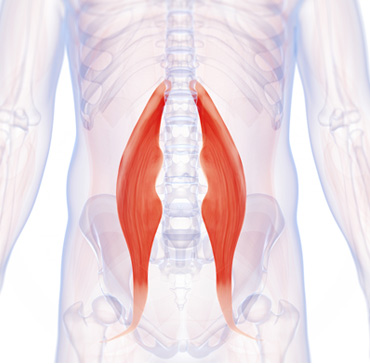
The "Hidden Survival Muscle" In Your Body Missed By
Modern Physicians That Keep Millions Of Men And Women Defeated By Pain, Frustrated With Belly Fat, And Struggling To Feel Energized Every Day…
--------------------------------------------------------

Withholding
Emotional pain is at the root of our tendency to withhold, and this causes pain to the people subjected to it.
The most common form of withholding is what we commonly call "the silent treatment," but withholding encompasses any unwillingness to express your true feelings. It also includes an unwillingness to give support, praise, or positive attention to the people you love.
We have all known someone who is impossible to please, and many of us have suddenly found ourselves at the other end of a chilly silence with no explanation. At the same time, many of us will recognize our own tendency to withhold our emotions rather than express them. Most of us have seen both sides of the withholding dilemma.
Emotional pain is at the root of our tendency to withhold, and withholding causes pain to the people subjected to it. It is a dysfunctional pattern that creates a breakdown in communication and
understanding.
No one deserves to be subjected to withholding. Feeling ignored, disrespected, or shut out, and to not know why, is a terrible feeling. The first thing to remember if this is happening to you is that
you are not to blame. You are caught in someone else's pain pattern. This person does not know how to express feelings in a healthy way probably because this is what they learned when she or he was a
child.
The second helpful thing to remember is that the withholder is acting out of pain. They are stuck in a habitual mode of response that is self-defeating and alienating to the people they love. Remembering this will help you feel compassion for the person hurting you. However, if you have suffered too long with this pattern, you may need to get some space. Take some time to look at your own patterns and understand why you have taken part in this drama. If you are dealing with people in a family situation, you can step up to the plate to help break the chain of this behavior pattern.
- Medical Author: Standiford Helm II, MD
- Medical Editor: William C. Shiel Jr., MD, FACP, FACR
- Pain Management Center
- Surprising Reasons You're in Pain Slideshow
- Take the Pain Quiz
- Joint-Friendly Exercises to Reduce RA Pain Slideshow
- Pain FAQs
- Patient Comments: Pain Management - Effective Treatments
- Patient Comments: Pain Management - Causes
- Patient Comments: Pain Management - Nociceptive Pain
- Patient Comments: Pain Management - Neuropathic Pain
- Find a local Pain Management Physician in your town
- Introduction to pain management
- How is pain treatment guided?
- What are the basic types of pain?
- Nociceptive pain
- Neuropathic pain
- What are other causes of pain?Introduction to pain management
Introduction to Pain Management.
Pain management can be simple or complex, depending on the cause of the pain. An example of pain that is typically less complex would be nerve root irritation from a herniated disc with pain radiating down the leg. This condition can often be alleviated with an epidural steroid injection and physical therapy. Sometimes, however, the pain does not go away. This can require a wide variety of skills and techniques to treat the pain. These skills and techniques include:
- Interventional procedures
- Medication management
- Physical therapy or chiropractic therapy
- Psychological counseling and support
- Acupuncture and other alternative therapies; and
- Referral to other medical specialists
All of these skills and services are necessary because pain can involve many aspects of a person's daily life.
How is pain treatment guided?
The treatment of pain is guided by the history of the pain, its intensity, duration, aggravating and relieving conditions, and structures involved in causing the pain. In order for a structure to cause pain, it must have a nerve supply, be susceptible to injury, and stimulation of the structure should cause pain. The concept behind most interventional procedures for treating pain is that there is a specific structure in the body with nerves of sensation that is generating the pain. Pain management has a role in identifying the precise source of the problem and isolating the optimal treatment.
Fluoroscopy is an X-ray guided viewing method. Fluoroscopy is often used to assist the doctor in precisely locating the injection so that the medication reaches the appropriate spot and only the appropriate spot. Ultrasound is also used to identify structures and guide injections.

Scroll down and watch this SLIDESHOW
Pain Management: Surprising Causes of Pain See Slideshow by scrolling down picture to picture

Pain...Oh, What a Pain!
Medical Author: William C. Shiel, Jr., MD, FACP, FACR
Pain is an unpleasant sensation in animals that is caused by actual or perceived injury to body tissues and produces physical and emotional reactions. Presumably, pain sensation has evolved to protect our bodies from harm by causing us to perform certain actions and avoid others. Pain might be called a protector, a predictor, or simply a hassle.
In this article, I will discuss some basic concepts of pain.
We all experience pain to greater or lesser degrees at various points of our lives. It is said that pain is the most common reason patients seek medical attention. But, each of us perceives a given pain stimulus in our own unique manner. The intensity of the response to a pain stimulus is largely subjective, meaning the severity of the pain can most accurately be defined by the person with the pain, rather than by other observers.
Our individual pain perception can vary at different times, even in response to the identical stimulus. For example, an athlete during competition may not be able to feel the tissue injury of a cut or a bruise until the competition has finished. We may feel more or less pain depending on our mood, sleep pattern, hunger, or activity.
What are the basic types of pain?
There are many sources of pain. One way of dividing these sources of pain is to divide them into two groups, nociceptive pain and neuropathic pain. How pain is treated depends in large part upon what type of pain it is.
Nociceptive pain
Examples of nociceptive pain are a cut or a broken bone. Tissue damage or injury initiates signals that are transferred through peripheral nerves to the brain via the spinal cord. Pain signals are modulated throughout the pathways. This is how we become aware that something is hurting.
Neuropathic pain
Neuropathic pain is pain caused by damage or disease that affects the nervous system. Sometimes there is no obvious source of pain, and this pain can occur spontaneously. Classic examples of this pain are shingles and diabetic peripheral neuropathy. It is pain that can occur after nerves are cut or after a stroke.
4 Steps to Loving Your Ordinary Life
Written by Marc Chernoff

Let’s start with the bitter truth:
You will never be as good as you think you should be.
And life will never be as easy as you expected.
All of us are faced with the same reality. There will inevitably be times when we slip up and fail to meet our (unreasonable) expectations of ourselves. It’ll likely happen quite often too. And if we don’t embrace these slip-ups and failures as necessary lessons learned, we will gradually and unknowingly become self-conscious about everything we’re not doing and achieving according to planned.
Honestly, it happens every day to the best of us—we hopelessly catch ourselves thinking about how we’re falling short.
We worry that we haven’t made as much progress as we thought we would. We worry that we’ll never be as productive as we could be. And our worrying just leads to more senseless worrying.
We worry that we don’t…
- have better-looking bodies
- get to the gym more often
- accomplish more of our goals
- etc.
We worry that we should be doing…
- something better
- something more amazing
- all those amazing things the people on TV and social media are doing
- etc.
And so, we’re left feeling guilty that we’re not as good as we should be—that we’re not doing the perfect thing at the perfect time, ever.
The good news is that thoughts like these are natural, because the human mind isn’t perfect—it worries about things. But we can learn to catch and control these thoughts, so they don’t catch and control us.
Letting Go of Our “Perfect Life” Fantasies
To an extent, we all have this lavish idea in our heads about how our lives are supposed to be. We fantasize that we should be living a different and better life…
- A life without procrastination and failure
- A life with spectacular feats of success
- A life of travel and adventure
- A life with perfect friends, family, and partners
- etc.
And through it all we’re supposed to be smiling too, right?
Wrong! That’s not how life really works. At least not 24/7.
The truth is, we are miraculously flawed human beings living miraculously flawed lives. And the “miraculous” part only transpires when we accept and make the best of what we have.
Close your eyes and reflect on the present reality of your life, and whisper, “I am OK. Life is OK. I will let my present life situation be what it is, instead of what I think it should be, and I will make the best of it.”
The key is to accept the fact that there’s no such thing as a perfect life. There’s no perfect thing you should have already accomplished, and no perfect sequence of things you should be accomplishing right now.
There’s just this moment you’re living through and what you choose to do with it.
And yes, disappointment with this moment, with yourself, and with others is often part of the picture—there’s no escaping this reality.
But what will you choose to do…
You can be disappointed in this moment and do nothing, or you can practice being satisfied with the opportunity to make the very best of it.
Making the Best of Your Ordinary Life
When Angel and I guide our course students through the process of letting go of their “perfect life” or “perfect self” fantasies, we cover a four-step practice for doing so. It’s a simple series of steps that can work wonders at any given moment in time, but it takes some diligence (it’s not necessarily convenient or easy):
- When you feel your “life isn’t good enough” anxiety rising, pause, close your eyes, and notice that you’re in the process of worrying about what you’re not doing, or what you haven’t yet achieved. Notice the feelings of disappointment you have with yourself and your life at the present moment.
- Accept these feelings of disappointment as a part of you, focus on them, and just allow yourself to feel them. As you focus, notice the emotional sensations of this feeling throughout your body.
- Open your eyes, turn your attention to the present moment: what are you doing right now? Put all of your awareness into this moment—be 100% present with the physical and emotional sensations of whatever you’re doing.
- Notice that the present moment is enough—enough for right now. It doesn’t need to be better. It doesn’t need to be anything more. It’s good enough already, in its own unique way. And so are you.
Again, this is a practice—a life-changing daily ritual—and it’s not something any of us will ever be “perfect” at. We just remind ourselves often, and when we forget we remind ourselves again, and we begin again with our practice. One day at a time. (Angel and I build life-changing daily rituals with our students in the “Goals and Growth” module of the Getting Back to Happy Course.)
Oh, and this short article, by the way, is as much a reminder to Angel and me as it is a guide for you or anybody else who might find value in it.
We’re all in this one together.
May this moment be as good as we collectively choose to make it.
This Moment: Our Most Precious Resource
As I wrap up here, I’m reminded of something Angel and I have learned the hard way from the most heart wrenching moments of our lives—losing loved ones early and unexpectedly: Death is an unpredictable inevitability.
Embracing this fact provides a renewed sense of awareness, to realize that we’ve lived a certain number of days, and the days ahead of us are not as guaranteed as the one we’re living through right now.
When I think of this I am reminded that every day truly is an opportunity to be grateful for, not in a clichéd kind of way, but to honestly appreciate what we have here, and to admit that we alone are responsible for the quality of our present lives. This makes our self-respect and positive focus evermore important, right here, right now. It leaves no time to wallow in self-pity and self-doubt.
The last thing any of us wants to do is die with regret, hence why respecting the reality of death puts life into perspective. It humbles us and should also deeply motivate us to lead our lives and make the best of it…
Less criticizing and complaining.
More acceptance, appreciation and enjoyment of this blessed yet often ordinary life.
Love where you are right now. You’ve come a long way, and you’re still learning and growing. Be thankful for the lessons. Take them and make the best of things right now.

Walking through Your Fear
Frequently, in walking through our fear, we discover that the strength of our fright was out of sync with reality.
The situations, activities, and individuals that frighten us remain static. Their relative intensity does not change. Fear, on the other hand, self-magnifies. It is when you are afraid and envisioning all that might go wrong that the energy underlying your fear grows.
A tiny flicker of anxiety can easily develop into a terror that manifests itself physically and eventually paralyzes you into inaction. Though frequently, in walking through that fear, we discover
that the strength of our fright was out of synch with reality. And we learn that doing what frightens us can lead to great blessings. Confronting your trepidation head-on will help you accept that
few frightening scenarios will ever live up to the negative disasters that we sometimes play out in our minds.
Though fear is literally an evolutionary gift meant to sharpen your senses and energize you during times of great stress, it can nonetheless become a barrier that prevents you from fulfilling your
potential by causing you to miss out on rewarding, life-changing experiences.
During the period before you face your fear, you may have to deal with a barrage of negative thoughts and emotions. Walking through it, whether your fear is public speaking, taking part in an activity that makes you nervous, or asserting yourself when the odds are against you, may be equally as difficult.
But once you have emerged unscathed on the other side, which you will, you will likely wonder why you assumed the worst in the first place. As you spend time worrying about what might happen, it's good to know that your fear probably won't happen at all. It may feel like a great weight has been lifted from your shoulders, and you will likely feel a sense of passionate pride.
Walking through your fear can mean taking risks and can require both practice and patience. Since it is challenging to act when you are gripped with fear, start small.
Each step you take into fear will strengthen you and help you confront future fears with poise, courage, and confidence. You will also find that when you are willing to stare your fear in the face,
the universe will always offer you some form of aid or support.
When you see the heights of accomplishment and personal evolution you can attain when you walk through your fears, your faith in yourself will grow, allowing your next step to be easier.
Managing Chronic Pain:
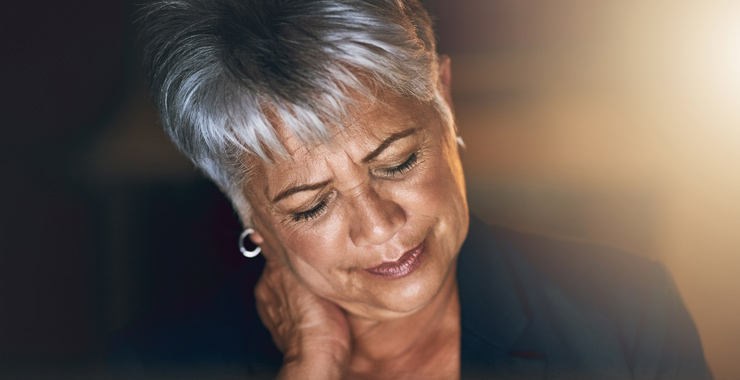
The nature of pain
Download a PDF of this article
Pain is an all-too-familiar problem and the most common reason that people see a physician. Unfortunately, alleviating pain isn't always straightforward.
At least 100 million adults in the United States suffer from chronic pain, according to the Institute of Medicine. The American Academy of Pain Medicine reports that chronic pain affects more Americans than diabetes, heart disease and cancer combined.
Pain serves an important purpose by alerting you to injuries such as a sprained ankle or burned hand. Chronic pain, however, is often more complex. People often think of pain as a purely physical sensation. However, pain has biological, psychological and emotional factors.
Furthermore, chronic pain can cause feelings such as anger, hopelessness, sadness and anxiety. To treat pain effectively, you must address the physical, emotional and psychological aspects.
Medical treatments, including medication, surgery, rehabilitation and physical therapy, may be helpful for treating chronic pain. Psychological treatments are also an important part of pain management. Understanding and managing the thoughts, emotions and behaviors that accompany the discomfort can help you cope more effectively with your pain — and can actually reduce the intensity of your pain.
Seeing a psychologist about pain
Psychologists are experts in helping people cope with the thoughts, feelings and behaviors that accompany chronic pain. They may work with individuals and families through an independent private practice or as part of a health care team in a clinical setting.
Patients with chronic pain may be referred to psychologists by other health care providers. Psychologists may collaborate with other health care professionals to address both the physical and emotional aspects of the patient's pain.
When working with a psychologist, you can expect to discuss your physical and emotional health. The psychologist will ask about the pain you experience, where and when it occurs, and what factors may affect it. In addition, he or she will likely ask you to discuss any worries or stresses, including those related to your pain.
You also may be asked to complete a questionnaire that allows you to record your own thoughts and feelings about your pain.
Having a comprehensive understanding of your concerns will help the psychologist begin to develop a treatment plan.
For patients dealing with chronic pain, treatment plans are designed for that particular patient. The plan often involves teaching relaxation techniques, changing old beliefs about pain, building new coping skills and addressing any anxiety or depression that may accompany your pain.
One way to do this is by helping you learn to challenge any unhelpful thoughts you have about pain. A psychologist can help you develop new ways to think about problems and to find solutions.
In some cases, distracting yourself from pain is helpful. In other cases, a psychologist can help you develop new ways to think about your pain. Studies have found that some psychotherapy can be as effective as surgery for relieving chronic pain because psychological treatments for pain can alter how your brain processes pain sensations.
A psychologist can also help you make lifestyle changes that will allow you to continue participating in work and recreational activities. And because pain often contributes to insomnia, a psychologist may also help you learn new ways to sleep better.
Progressing and improving
Most patients find they can better manage their pain after just a few sessions with a psychologist.
Those who are experiencing depression or dealing with a long-term degenerative medical condition may benefit from a longer course of treatment. Together with your psychologist, you will determine how long treatment should last. The goal is to help you develop skills to cope with your pain and live a full life.
Stress and chronic pain
Having a painful condition is stressful.
Unfortunately, stress can contribute to a range of health problems, including high blood pressure, heart disease, obesity, diabetes, depression and anxiety. In addition, stress can trigger muscle tension or muscle spasms that may increase pain. Managing your emotions can directly affect the intensity of your pain.
Psychologists can help you manage the stresses in your life related to your chronic pain.
Psychologists can help you learn relaxation techniques, such as meditation or breathing exercises to keep stress levels under control.
Some psychologists and other health care providers use an approach called biofeedback, which teaches you how to control certain body functions.
In biofeedback, sensors attached to your skin measure your stress response by tracking processes like heart rate, blood pressure and even brain waves.
As you learn strategies to relax your muscles and your mind, you can watch on a computer screen as your body's stress response decreases. In this way, you can determine which relaxation strategies are most effective, and practice using them to control your body's response to tension.
Stress is an unavoidable part of life, but managing your stress will help your body and your mind and lessen your pain.
Tips for coping with pain
Consider the following steps that can be helpful in changing habits and improving your sleep:
- Stay active. Pain — or the fear of pain — can lead people to stop doing the things they enjoy. It's important not to let pain take over your life.
- Know your limits. Continue to be active in a way that acknowledges your physical limitations. Make a plan about how to manage your pain, and don't push yourself to do more than you can handle.
- Exercise. Stay healthy with low-impact exercise such as stretching, yoga, walking and swimming.
- Make social connections. Call a family member, invite a friend to lunch or make a date for coffee with a pal you haven't seen in a while. Research shows that people with greater social support are more resilient and experience less depression and anxiety. Ask for help when you need it.
- Distract yourself. When pain flares, find ways to distract your mind from it. Watch a movie, take a walk, engage in a hobby or visit a museum. Pleasant experiences can help you cope with pain.
- Don't lose hope. With the right kind of psychological treatments, many people learn to manage their pain and think of it in a different way.
- Follow prescriptions carefully. If medications are part of your treatment plan, be sure to use them as prescribed by your doctor to avoid possible dangerous side effects. In addition to helping you develop better ways to cope with and manage pain, psychologists can help you develop a routine to stay on track with your treatment.

Learning to Slow Down
When we rush through our days and lives, we fail to notice the simple beauty of living.
Throughout our lives, we are taught to value speed and getting things done quickly.
We learn that doing is more valuable than merely being, and that making the most of life is a matter of forging ahead at a hurried pace.
Yet as we lurch forward in search of some elusive sense of fulfillment, we find ourselves feeling increasingly harried and disconnected. More importantly, we fail to notice the simple beauty of living. When we learn to slow down, we rediscover the significance of seemingly inconsequential aspects of life. Mealtimes become meditative celebrations of nourishment.
A job well-done becomes a source of profound pleasure, no matter what the nature of our labors. In essence, we give ourselves the gift of time--time to indulge our curiosity, to enjoy the moment,
to appreciate worldly wonders, to sit and think, to connect with others, and to explore our inner landscapes more fully.
A life savored slowly need not be passive, inefficient, or slothful. Conducting ourselves at a slower pace enables us to be selective in how we spend our time and to fully appreciate each passing
moment.
Slowness can even be a boon in situations that seem to demand haste. When we pace ourselves for even a few moments as we address urgent matters, we can center ourselves before moving ahead with our plans. Embracing simplicity allows us to gradually purge from our lives those commitments and activities that do not benefit us in some way.
The extra time we consequently gain can seem like vast, empty stretches of wasted potential. But as we learn to slow down, we soon realize that eliminating unnecessary rapidity from our
experiences allows us to fill that time in a constructive, fulfilling, and agreeable way. We can relish our morning rituals, linger over quality time with loved ones, immerse ourselves wholeheartedly
in our work, and take advantage of opportunities to nurture ourselves every single day.
You may find it challenging to avoid giving in to the temptation to rush, particularly if you have acclimated to a world of split-second communication, cell phones, email and overflowing agendas. Yet
the sense of continuous accomplishment you lose when you slow down will quickly be replaced by feelings of magnificent contentment.
Your relaxed tempo will open your mind and heart to deeper levels of awareness that help you discover the true gloriousness of being alive.
Chronic Pain and the Mind-Body Connection, Explained
Chronic pain is something that millions of people all over the world experience. From back and neck pain to headaches and even migraines, it seems everyone knows someone who experiences some sort of chronic pain, if not themselves directly.
In fact, the National Institute of Health says that pain affects more Americans than diabetes, heart disease and cancer combined. It is also cited as the most common reason Americans access the health care system, becoming a leading cause of disability and a major contributor to health care costs. The National Center for Health Statistics found that
Approximately 76.2 million (one in every four Americans) have suffered from pain that lasts longer than 24 hours, with chronic pain being the most common cause of long-term disability.
To make matters worse, the Centers for Disease Control found that sales of prescription opioids in the U.S. nearly quadrupled from 1999 to 2014, with prescription opioid overdose deaths increasing at a similar rate.
Looking at these statistics, one can come to the conclusion that America is experiencing a pain epidemic of disastrous proportions.
But, what if that pain could be healed without medication or even the use of physical means like massage or chiropractic adjustments?
What if all it took to relieve your pain was a deeper look inside your mind?
Well, according to a Dr. John E. Sarno, that’s all it takes.
After years of treating patients with chronic pain, even working as the clinical director at the New York State Rehabilitation Hospital, Dr. Sarno found that even after surgery, his patients would continue to have pain.
And, as good doctors do, Dr. Sarno began looking deeper to find a solution to the suffering he was seeing his patients experience every day, and his research led him to the mind-body connection.
What is the mind-body connection?
The mind-body connection is a simple concept that the mind plays a role in producing the perception of pain, and in promoting healing. Now, this idea isn’t new. In fact, going back to the time of the Early Greeks and Romans, it was Hippocrates who, to our knowledge, first made that connection.
However, as years and even centuries went by, scientists began to separate the mind and body, treating the body as its own separate machine. Medical doctors of the 19th century began developing opiates such as morphine to relieve pain.
Things like Aspirin and other oral pain medications were then developed, treating the pain symptoms that so many were experiencing. This in turn, shifted people’s mindset that pain was a physical thing, not something that could be triggered or even healed by the mind.
Enter: Dr. Sarno
In 1965, Dr. Sarno was working as the Director of the Outpatient Department at the Rusk Institute of Rehabilitation Medicine, and found his position frustrating.
In his book, “Healing Back Pain: The Mind Body Connection,” Dr. Sarno wrote about being frustrated, stating, “The experience of treating these patients was frustrating and depressing; one could never predict the outcome. … It was troubling to realize that the pattern of pain and physical examination findings often did not correlate with the presumed reason for the pain. … Someone might have a lumbar disc that was herniated to the left and have pain in the right leg.”

While noticing several inconsistencies in his patients, he dug deeper to find that the primary tissue involved was muscle, in particular those in the neck, shoulders, back and buttocks.
These patients, Dr. Sarno came to find also had histories of migraine headache, heartburn, stomach ulcers, irritable bowel syndrome, asthma and eczema — all of which were related to tension in the body.
After his observations, Dr. Sarno concluded that the pain his patients were experiencing was induced by tension, or as he put it, “Emotions that are generated in the unconscious mind and that, to a large extent, remain there.
”He further researched that repressed emotions like anxiety and anger began a process where the autonomic nervous system causes a reduction in blood flow to certain parts of the body, resulting in pain.
Dr. Sarno believed that while the pain was real, it was controlled by their brains, and as such, could be turned off at will. He called the condition, Tension Myositis Syndrome (TMS), referring to the tension (suppressed emotions) in the muscles.
Putting his theory to the test
If you see a person in agonizing pain, try telling him that the pain is all his head. You would quite possibly find yourself writhing in pain after getting socked in the face.
Well, that is exactly what Dr. Sarno had to do.
Rather than prescribing medication, surgery, rest, or eventually even physical therapy, chiropractic adjustments or massage therapy, Dr. Sarno had his patients pay attention to what was happening in their lives.
What were they worried about? What life stressors were they dealing with at the moment? He even had them dig deep into their unconscious and subconscious mind to find suppressed memories that brought about feelings and emotions that hadn’t been or weren’t being dealt with.
He instructed his patients to talk to their pain and tell it to leave, essentially bringing the pain out of the physical realm and into the psychological. He told them not to repress anger or emotions, think of themselves as being injured or be intimidated by the pain.
Dr. Sarno took it a step further by telling patients to stop all treatments that he deemed as placebos, and to resume physical exercise as soon as possible.
The results?
The results of Dr. Sarno’s studies, he published in two follow-up surveys that can be found in his books.
The first one was conducted in 1982 and included 177 randomly selected patients. 76 percent stated that they were leading normal, pain-free lives.
The second follow-up survey took place in 1987, included 109 randomly selected patients, however, only included patients with herniated discs identified on CT-scans. 88 percent stated that they were free of pain one to three years after their TMS treatment.
Why haven’t you heard of this?
With chronic pain being so prevalent in today’s society, why have so few people heard about TMS? Simply put, TMS treatments have yet to be embraced by mainstream medical establishments. The medical world is slow to change, and Dr. Sarno found several times over in his quest to educate medical professionals.
But it isn’t just Dr. Sarno
While Dr. Sarno is a, if not the pioneer in the mind body connection, there are many doing what they can to help individuals with chronic pain. And with the recent passing of Dr. Sarno in June, 2017, several TMS professionals have found it necessary that others continue his work.
In fact, a recent Indiegogo campaign is working to gain traction and funding to garner the attention of mainstream medical science.
With several TMS trained doctors, therapists and professors at its disposal, this breakthrough study is making strides to change minds to rid the world of pain — one brain at a time.
|
|
|
|
|
|
|
|
|
|
|
6 Cheap, Natural, and Quick Chronic Pain Remedies
Chronic pain affects about 1 in 5 people in the U.S., making it difficult if not impossible to work and enjoy family and social time.
If you have chronic pain — typically defined as longer than three months and not responding to treatment — your body hasn't turned off the pain messages to the brain, even though the original source of the pain may be gone.
The pain may be linked with a condition such as arthritis, to a sprain or other injury, or to any number of more elusive causes.
While medications abound, some prefer more natural or holistic methods to quell the pain. Others find that medication doesn't quite give them enough relief, and are looking for natural treatments to add on to their standard treatments, or replace them.
Complicating the picture is that doctors still don't understand chronic pain, but they do know that what works for one person may not work for another. So, in this case, try, try again is good advice.
RELATED: How You Can Eat to Beat Back Pain
Next time chronic pain is dragging you down, consider trying a more natural route to relief. And, because pain is individual, ask your doctor for specifics about these treatments, such as doses and time to continue trying them.
1. Exercise. "People who exercise and maintain a good aerobic condition will improve most pain conditions," says Charles Kim, MD, assistant professor of rehabilitation medicine and anesthesiology and a certified medical acupuncturist at Rusk Rehabilitation at NYU Langone Medical Center.
When we work out, he says, the body produces its own version of painkillers, such as endorphins, hormones that actually increase your pain threshold. Endorphins interact with brain receptors and can change our perception of pain.
When patients tell Dr. Kim they are in too much pain to exercise, he suggests they start slowly, and do even a little burst of walking or other activity — then build up.
In one review of non-pharmacologic treatments for chronic pain, researchers concluded that exercise was moderately effective.
2. Fish Oil. Fish oil is known for its anti-inflammatory properties, and inflammation plays a large role in pain, says Michael Cronin, ND, a naturopathic physician in Scottsdale, Az., and immediate past president of the American Association of Naturopathic Physicians.
In one study, researchers instructed patients with neck or back pain to take 1200 milligrams a day of fish oil supplements with eicosapentaenoic and decosahexanoic acid. After 75 days on fish oil, more than half of the 125 patients who reported back said they had stopped their prescription painkillers.
3. Turmeric. Also called Curcuma longa, turmeric is basically a root, Kim says. "It's often found in spicy foods, very much in Indian cooking. Studies have shown it has definite anti-inflammatory properties."
Researchers who tested a combination of turmeric with two other substances, Devil's claw and bromelain, on patients with pain from osteoarthritis found the mixture gave noticeable pain relief. Patients took two 650-milligram capsules either two or three times a day.
4. Resveratrol. Found in red wine, grapes and berries, resveratrol is known to have many beneficial effects, including anti-cancer, brain protective and even life-prolonging benefits.
Recently, researchers reported that the substance works on a cellular level for pain regulation.
5. Heat Therapy. Using heat as well as cold therapy are time-honored ways to quell pain, Dr. Cronin and Kim agree.
"Hot Epsom salt baths relax the mind and change the nervous input from the body to the brain," Cronin says. "Using ice is a well-accepted modality that decreases inflammation locally."
The key is to know when to use which.
"When you have an acute injury, put ice on it right away," Kim says. For instance, you twist your ankle and it's painful and swollen. Using heat in this situation will increase blood flow and increase the swelling, he says.
"If you have lingering back spasms, heat would be the best for that," Kim says. He suggests taking a warm shower and massaging your neck or back (or whatever body part hurts) under the warm water.
6. Meditation. Meditation can quell pain, Kim says. While some people get anxious, thinking they have to do meditation a certain way, Kim tells them it's just not true.
"Meditation is not scripted," he says. While you can get instruction, you can also look up approaches and follow instructions, such as this information on the approach known as mindfulness meditation.
Researchers who assigned 109 patients with chronic pain to either a mindfulness meditation program or a wait list found that those who did the meditation reported more pain relief, as well as lower anxiety and depression and a better mental quality of life, than those who did not.
---------------------------------------------------------------------------------------------------------
Make sure you visit the onlie VIVE Health Shop or helpful solutions for pain, sleep, exercise, mobility and many more
unique solutions. Just click here.
------------------------------------------------------------------

